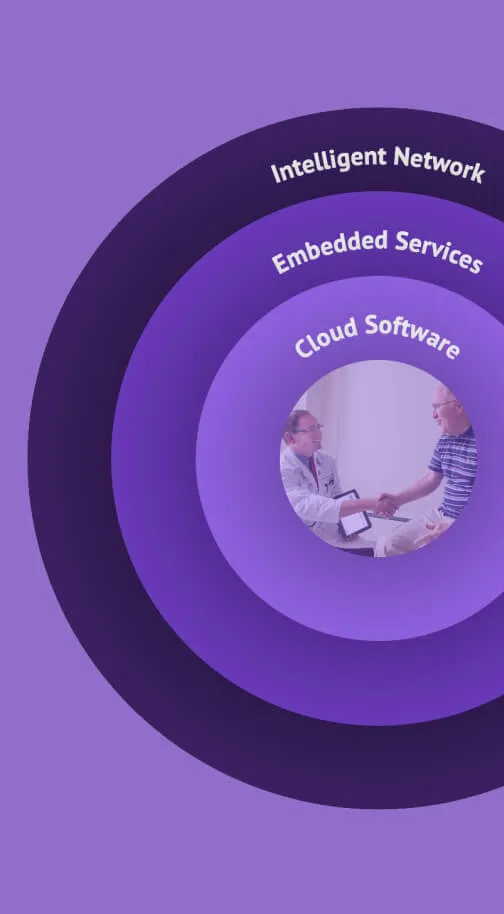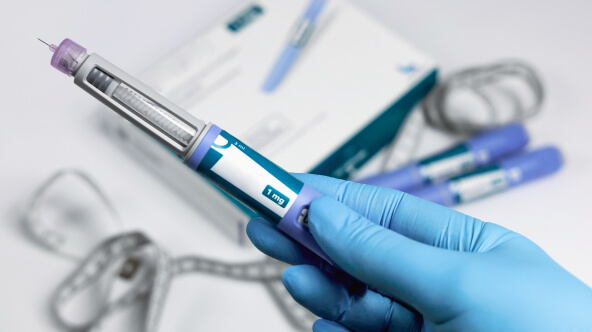Women’s health insights from the Patient Digital Engagement Index
Digital health is on the rise, with many patients relying more and more on certain digital tools to manage their healthcare. However, this digital patient engagement isn’t universal across demographics—some groups of patients are shown to be more digitally-inclined than others when it comes to communicating with their physicians. Recent quantitative findings from athenahealth’s research on patient digital engagement shows that the most digitally engaged patients are White or Asian millennial (defined as born between 1981-1996) women who live in more urban areas.1 Additionally, women’s health and behavioral health practices are shown to have the highest patient digital engagement scores compared to all other specialties.2
Data from athenahealth’s patient digital engagement survey also showcases how women across generations are using digital tools, like email, patient portals, and telehealth, to engage with the healthcare ecosystem. In fact, Gen Z (defined as born between 1996-2010) and millennial women in particular are more engaged than men and even women from older generations. These groups of younger women are adopting digital tools to fill out forms or paperwork, schedule appointments, and monitor their health at higher rates than older women.3
Using patient survey data, we wanted to take a closer look at millennial women as the “top user” of digital healthcare tools and examine how millennial women are not only managing their own healthcare, but also often take on the role of managing their family’s health as well.
To start, let’s take a closer look at how these habits are currently evolving for women of younger generations.
The habits of younger women are changing when it comes to digital health
When we examine how women across generations are using digital tools, it’s clear that younger women, specifically Gen Z and millennial women, are leading the charge. Over 54% of Gen Z and millennial women are using text messaging to engage with the healthcare system, compared to only just 29.6% of women Gen X and older.4 This stark difference across generations underscores the preference of younger women for immediate, accessible communication methods that align with their digitally integrated lifestyles. Younger women may prefer using the same tools to manage their healthcare as they already use in other areas of their life, such as for order updates, weather alerts, and communicating with friends and family.
Similar to text messages and SMS, email remains a trusted form of communication for younger generations of women. About 56% of Gen Z and millennial women are currently using email to communicate with clinicians, while less than half, or 44%, of women Gen X and older report use of email.5 Using email to communicate with the healthcare system could be a useful channel for more detailed or longer form communication, such as lab results, care instructions, and billing information. Also, certain email functionalities like response reminders could be helping younger generations of women to stay on top of timely correspondence with their care team. Finally, in an increasingly mobile-first world, it’s evident why text and email are preferred, since both can be quickly and easily accessed while on the go.
Looking at telehealth, younger generations of women are slightly ahead. 35% of Gen Z and millennial women are using telehealth as one of their digital health tools, while only 28% of women Gen X and older are leveraging telehealth.6 Other athenahealth research has shown that telehealth isn’t equally useful to all groups of women, with factors like race and insurance status impacting usage rates. Compared to the astronomical rise in telehealth usage during the pandemic, we might see a plateau when it comes to telehealth's impact on digital engagement.
Electronic payments are close behind, with 31% of Gen Z and millennial women using this digital tool compared to about 25% of women Gen X and older.7 Although these rates for telehealth and electronic payments are not quite as high as email and text, these trends may point to a growing preference for convenience and digital-first solutions among younger generations.
Different digital healthcare needs for different generations
So, with this analysis of how various generations are interacting with tools, are digital health needs universal? Our findings suggest the answer is no, and the preference for tools and use cases differs between age groups.
Women Gen X and older are shown to prioritize tools like patient portals, which offer comprehensive access to medical records, appointment scheduling, and secure messaging. About two-thirds of women (66.7%) Gen X and older are using patient portals to engage with and manage their healthcare.8 While younger women are embracing newer technologies, such as texting and apps, older women’s reliance on patient portals demonstrates a need for solutions that cater to varying comfort levels with digital tools. This slight preference could suggest that older women place more value on centralized and organized access to healthcare information, especially as they manage chronic conditions or navigate more complex medical needs with age.
When examining use cases, other findings in similar literature suggest that millennial women are taking on the management of not just their own healthcare, but that of their family members as well. According to a recent study conducted by the American Heart Association, women, and mothers in particular, take on about 80% of the family’s medical decision-making responsibilities.9 Millennial women often find themselves at the intersection of multiple caregiving roles, and Gen X and millennial women oftentimes take on the role of healthcare decision-maker for their families.10 Mothers who are in this role may be more involved in managing pediatric healthcare, relying on digital tools to schedule vaccinations, track developmental milestones, and communicate with pediatricians. The use of patient portals and telehealth can streamline this process, particularly for long-distance caregiving. This responsibility underscores why millennial women who are juggling multiple roles and responsibilities might gravitate toward tools that offer convenience and flexibility, such as text messaging and electronic payments.
What can physicians learn from these insights on digital tools and women’s healthcare?
These findings from the patient digital engagement survey have the potential to help physicians better engage women across generations, serving them the right tools to manage their health and communicate with their care team. We've identified five key learnings that clinicians can leverage this data to drive actionable change within their practice.
- Younger women may prefer real-time engagement tools: Gen Z and millennial women’s preference for text messaging and email highlights their importance for accessible, real-time communication. Providers should integrate text capabilities for reminders and updates.
- Serve up convenient digital health options: When taking on the role of medical decision makers for both them and their families, younger women’s needs reflect a demand for digital tools that offer convenience and efficiency. Clinicians can meet them where they are by optimizing patient engagement tools for on-the-go healthcare management. What’s more, it could benefit practices to also examine their use of email as a tool for convenient communication.
- Patient portals as an evergreen digital health tool: Despite some potential differences in tool usage between generations, patient portals remain a cornerstone for women’s healthcare management. Enhancing their usability and improving functionality can benefit patients of all ages.
- Adapting to technological trends: Though ranking slightly behind text and email, telehealth and electronic payments’ potential for growth suggests a shift toward digital, convenience-driven healthcare. Clinicians can prioritize these tools to help meet patients’ evolving expectations.
- Bridging the digital divide: Ensuring that digital tools across the healthcare ecosystem are accessible, user-friendly, and inclusive can help older generations of women feel more confident in adopting these technologies. To help encourage adoption of digital tools, leverage invitations to the patient portal or helpful email reminders on how to get started.
By understanding the evolving digital habits and needs of women across generations, clinicians can craft strategies that help enhance patient engagement and future loyalty. Our advice? Expand real-time communication tools like text, offer robust support for women navigating multi-generational healthcare needs, enhance patient portals to cater to varying levels of digital comfort, and finally, promote the growth of telehealth and electronic payment solutions to streamline care and help reduce administrative burden. Using these strategies, clinicians can keep their patients engaged and coming back for quality care—and patient engagement tools on athenaOne® can help you implement these improvements quickly and effectively.
To learn more about the state of patient engagement in healthcare, download our patient engagement white paper. If you’ve enjoyed the valuable insights from this data and want to read more about our findings from the patient digital engagement research, click here.
1-8. athenahealth survey of 1,000 people nationwide fielded by Dynata in August 2024.
9. American Heart Association. (April 17, 2024). Families often have chief medical officers—and they’re almost always women. Retrieved Feb 3, 2024, from https://www.heart.org/en/news/2024/04/17/families-often-have-chief-medical-officers-and-theyre-almost-always-women#:~:text=Studies%20suggest%20women%20%E2%80%93%20especially%20mothers,family's%20medical%20decision%2Dmaking%20responsibilities.
10. Accenture. (2023). Four key drivers for patient engagement and loyalty. Retrieved Feb 3, 2025, from https://www.accenture.com/content/dam/accenture/final/industry/health/document/Accenture-Four-Key-Drivers-for-Patient-Engagement-and-Loyalty-Transcript.pdf













